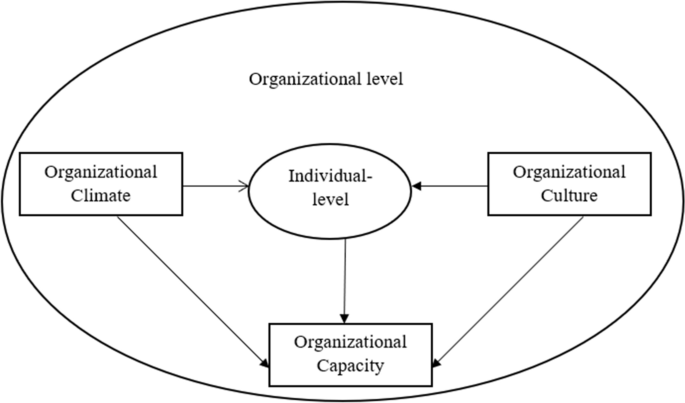Scholarly Data Analysis Frameworks and Models|2025
Discover the most common scholarly data analysis frameworks and models used in research, from statistical methods to qualitative approaches, and learn how they enhance data interpretation and academic success.
Data analysis is the backbone of research and decision-making in academia and industry. Scholarly frameworks and models help standardize, guide, and optimize the analytical process. These frameworks integrate theoretical constructs with practical tools, ensuring reliable, actionable insights. This article explores the most common scholarly data analysis frameworks and models, delves into examples of data analytics frameworks, and outlines key types of data analysis with practical applications.
Understanding Data Analysis Frameworks and Models
A data analysis framework serves as a structured approach to collect, process, analyze, and interpret data. It combines theoretical models with step-by-step methodologies to ensure systematic data handling. Scholarly frameworks prioritize replicability, reliability, and relevance, often employing both qualitative and quantitative approaches.
Importance of Frameworks:
- Standardization: Ensures consistency across studies.
- Decision-making: Facilitates evidence-based insights.
- Reproducibility: Enables other researchers to validate findings.
Examples of Scholarly Frameworks:
- CRISP-DM (Cross-Industry Standard Process for Data Mining): Widely used in both academia and industry.
- KDD (Knowledge Discovery in Databases): A conceptual framework emphasizing iterative exploration.
Data Analytics Framework Examples
A data analytics framework encompasses tools, processes, and methodologies used for extracting insights. Common scholarly frameworks include:
CRISP-DM (Cross-Industry Standard Process for Data Mining)
This framework involves six iterative phases:
- Business Understanding: Define goals and objectives.
- Data Understanding: Explore and preprocess data.
- Data Preparation: Clean, transform, and organize data.
- Modeling: Apply statistical or machine learning models.
- Evaluation: Assess the model’s performance.
- Deployment: Implement results in real-world scenarios.
KDD (Knowledge Discovery in Databases)
This involves discovering useful knowledge in large datasets through these steps:
- Selection
- Preprocessing
- Transformation
- Data Mining
- Interpretation/Evaluation
DELTA Framework (Data, Enterprise, Leadership, Targets, Analysts)
Focuses on leveraging organizational data strategically, combining technical and managerial perspectives.
Four-Step Data Analytics Framework
This simplified framework emphasizes:
- Data collection.
- Data processing.
- Analysis and interpretation.
- Reporting insights.
For additional examples and detailed processes, refer to resources like “Data analytics framework PDF” for downloadable guidelines.
The 4 Types of Analytics with Examples
Data analytics is often categorized into four main types, each addressing specific research or business objectives:
Descriptive Analytics
Focuses on summarizing historical data to identify trends and patterns.
- Example: Monthly sales reports showing trends in product demand.
Diagnostic Analytics
Explores the root causes of events or outcomes.
- Example: Analyzing customer churn rates and identifying service-related issues as contributing factors.
Predictive Analytics
Uses statistical models to forecast future outcomes.
- Example: Predicting student performance based on attendance and past grades.
Prescriptive Analytics
Recommends actions based on predictive insights.
- Example: Suggesting optimal inventory levels to minimize stockouts.
For practical implementation, combine these analytics types in decision-making processes.
Data Analytics Framework Steps
Implementing a data analytics framework typically follows these steps:
- Define Objectives: Understand the problem and formulate goals.
- Data Collection: Gather relevant data from reliable sources.
- Data Preparation: Clean, transform, and preprocess data for analysis.
- Analysis: Apply appropriate statistical, computational, or qualitative methods.
- Interpret Results: Contextualize findings and derive meaningful conclusions.
- Actionable Insights: Translate results into strategies or recommendations.
These steps ensure a comprehensive approach to analysis, suitable for scholarly and practical applications.
The 5 Types of Data Analytics
Beyond the primary four types, a fifth category is sometimes included to reflect operational analytics. These types collectively enhance decision-making capabilities:
Descriptive Analytics: What happened?
- Example: Average website traffic over a month.
Diagnostic Analytics: Why did it happen?
- Example: Evaluating server downtime causes using log data.
Predictive Analytics: What might happen?
- Example: Weather forecasting using historical patterns.
Prescriptive Analytics: What should we do?
- Example: Suggesting efficient supply chain routes using AI.
Operational Analytics: How are systems functioning?
- Example: Real-time monitoring of manufacturing processes.
Types of Data Analytics with Examples
Different types of data analytics cater to various fields:
- Healthcare: Predicting patient readmissions using predictive analytics.
- Finance: Fraud detection using diagnostic and predictive analytics.
- Education: Evaluating teaching methods using descriptive and prescriptive analytics.
- Retail: Personalized marketing using operational and predictive analytics.
Types of Data Analysis
Data analysis methods vary based on objectives, data types, and research context:
Qualitative Analysis
Focuses on non-numerical data to explore concepts and theories.
- Example: Thematic analysis of interview transcripts.
Quantitative Analysis
Employs numerical data for statistical or computational evaluation.
- Example: Regression analysis to predict housing prices.
Mixed Methods Analysis
Combines qualitative and quantitative approaches for a comprehensive understanding.
- Example: Using surveys and focus groups to evaluate customer satisfaction.
Exploratory Data Analysis (EDA)
Discovers patterns, trends, and anomalies in datasets.
- Example: Visualizing correlations between variables using scatter plots.
Confirmatory Data Analysis (CDA)
Tests hypotheses using statistical methods.
- Example: Conducting t-tests to validate experimental results.
Data Analysis and Decision Making
Data analysis is integral to informed decision-making. It involves systematically evaluating data to:
- Identify problems.
- Predict outcomes.
- Formulate strategies.
For detailed steps and examples, refer to “Data analysis and decision making PDF” resources, which provide comprehensive guides for integrating data into strategic frameworks.
Conclusion
Scholarly data analysis frameworks and models provide structured approaches to navigating complex datasets. By understanding types of analytics, their applications, and actionable frameworks, researchers and decision-makers can derive meaningful insights. Whether through CRISP-DM, KDD, or tailored frameworks, the key lies in aligning data strategies with objectives. For deeper insights, explore resources like “Data analytics framework PDF” and practical guides, ensuring a robust analytical foundation for scholarly and practical endeavors.
Needs help with similar assignment?
We are available 24x7 to deliver the best services and assignment ready within 3-4 hours? Order a custom-written, plagiarism-free paper




